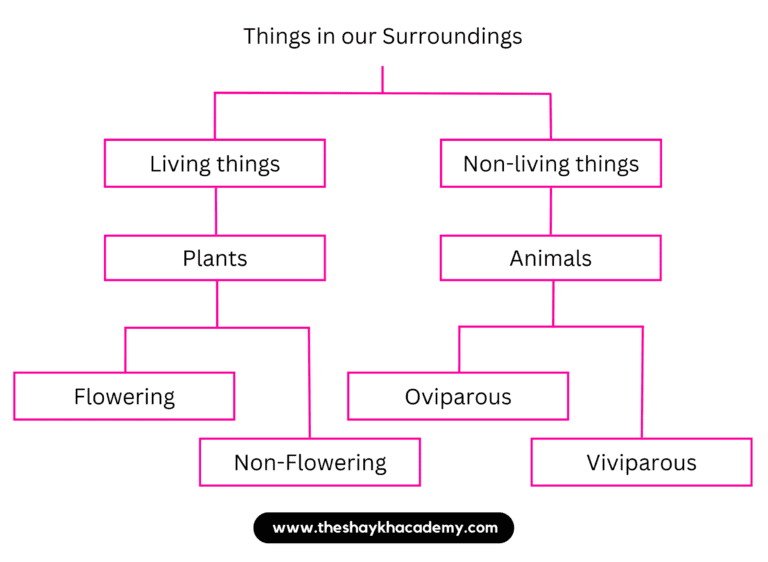Chapter 28 - All about Money
Things to do
1. Write a short note on ‘money’.
Ans: Money, in the form of coins and notes, is required to purchase goods and services. Different countries have different coins and notes. Dollars are used in the United States, while pounds are used in England. Long before paper money was invented, people used the barter system to exchange one thing for another. Stones, salt bricks, shells, and animal skins were used as currency over time. Grains, farm produce, cattle, goats, and chickens were bartered in exchange for tools and implements or wages. Later, precious metals and, finally, paper money were used. It is our responsibility to manage and spend money wisely because earning takes a lot of effort.
2. Look at the diagram on page 68. It is called a tree diagram because it has ‘branches’. Now read the following and draw a tree diagram to show this information.
Things in our surroundings form two groups – living things and non-living things. Living things are of two kinds, plants and animals. There are two types of plants – flowering plants and non-flowering plants. If we consider animals, we see that some animals lay eggs. They are oviparous animals. Some animals give birth to their young ones. They are viviparous animals.
Ans:

Find more topics from your Environmental Studies or Mathematics textbooks for drawing tree diagrams. Draw and label the diagrams.
3. Make meaningful sentences from the following table.

Ans: Conjunction – ‘but’
- She was tired but she finished her homework.
- She wanted to buy a car but she had no money.
- He was angry but he did not fight.
- He did not know the answer but he did not copy his friend’s answer.
- They did not have money but they lived happily.
- He did not read the book but knew the story.
Now try joining the sentences in the two columns using (1) and, (2) because.
Ans:
Conjunction – ‘and’
- She was tired and she finished her homework.
- She wanted to buy a car and she had no money.
- He was angry and he did not fight.
- He did not know the answer and he did not copy his friend’s answer.
- They did not have money and they lived happily.
- He did not read the book and knew the story.
Conjunction – ‘because’
- She was tired because she finished her homework.
- She wanted to buy a car because she had no money.
- He was angry because he did not fight.
- He did not know the answer because he did not copy his friend’s answer.
- They did not have money because they lived happily.
- He did not read the book because knew the story.
4. Ask your parents or other grown ups to show you some used notes. Observe them carefully. Have they been used properly? Write your observations.
Ans: As per my observation, I found that;
• Some of the notes are ripped, while others are unclean.
• On the notes, people have scribbled their names and phone numbers.
• There are some notes that have been stapled or sealed with cello tape, rendering them ineffective.
• The notes are crumpled.
5. Write an autobiography of a hundred-rupee note. (8-10 lines.)
Ans:
Autobiography of a Hundred-rupee Note
Hello there, friends! I am a one hundred rupee note. In the year 2000, I was born. I have a good value in grey and blue. The portrait of Mahatma Gandhi, the great leader of India’s freedom struggle, on me is a source of great pride for me.
My journey began at the Currency Note Press in Nashik, Maharashtra. From one person to the next—poor and rich, young and old—I’ve been with them all, albeit for a short time.
Some looked after me and worshipped me, while others mistreated me. But such is life! There will be both positive and negative experiences.
But my request to you, friends, is that you handle and spend me with care. After all, it takes a lot of work to earn me. I hope you took note of it.
